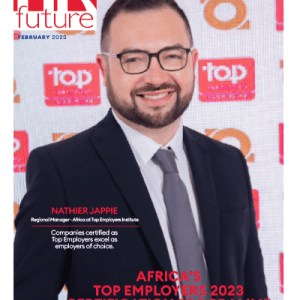Having a clear Employee Value Proposition (EVP) in place is a critical tool in obtaining top talent and is increasingly seen as an integral in the employer branding strategy. This is the employment deal that defines what an employer expects from its employees, and what it offers them in return.
A transparent and well-communicated EVP assists businesses in attracting, retaining, motivating and engaging employees to drive business success.
For employees, it shapes the overall view, emotional connection and discretionary effort they bring to the company. For both, it’s a critical element for a successful workplace and career experience.
If employees are not happy, how will they lead the organisation towards achieving goals? The modern business mantra is to take care of your employees first and they will take care of your customers. This is an approach that successful businesses have adopted for years.
Research from American global professional services firm, Towers Watson shows that organisations who use their EVP effectively are five times more likely to report that their employees are highly engaged and twice as likely to report achieving financial performance significantly above their peers.
The EVP tool is a powerful management tool when used and communicated effectively. Plus, improving communication of competitive rewards can have a greater impact on employee satisfaction and often – in turn – productivity.
Honing your EVP
The right team is crucial to the successful development of the EVP – make it cross-functional and include marketing or corporate communication, executives or managers as well as a diversity of age and tenure on the team.
Think about how you reward your employees – getting the right balance of benefits is crucial. Regard the EVP as the deal made between your business and its employees.
Getting it right
Focus on these key components when drawing up your EPV:
• Rewards (compensation and health benefits, pension assurance, vacations etc.);
• Opportunity (career growth opportunities, promotions, leadership opportunities, empowerment);
• Work Environment (interesting work, work life balance, opportunity to be creative and innovative, recognition for the efforts, amount of travelling for job requirements etc.); and
• People (team work, interaction amongst employees, social life, camaraderie etc.).
The process of getting your EVP right can be distilled into these practices:
• Effectively communicate the EVP to employees.
• Align the EVP with what your business stands for in the marketplace.
• Make sure to deliver on EVP promises.
• Use your business strategy regarding talent management and rewards programmes.
• Articulate a total rewards strategy aligned with your business and HR strategy.
An effective EVP aligns the whole work experience, from culture, mission and values, to total rewards, through jobs and people. It requires both a strong employer brand strategy and communication plan.
Once the EVP is defined, communicated and designed, check with employee groups regularly to refine your EVP. This will ensure that your organisation is delivering on its promise.
Kay Vittee is the CEO of Quest Staffing Solutions.

























